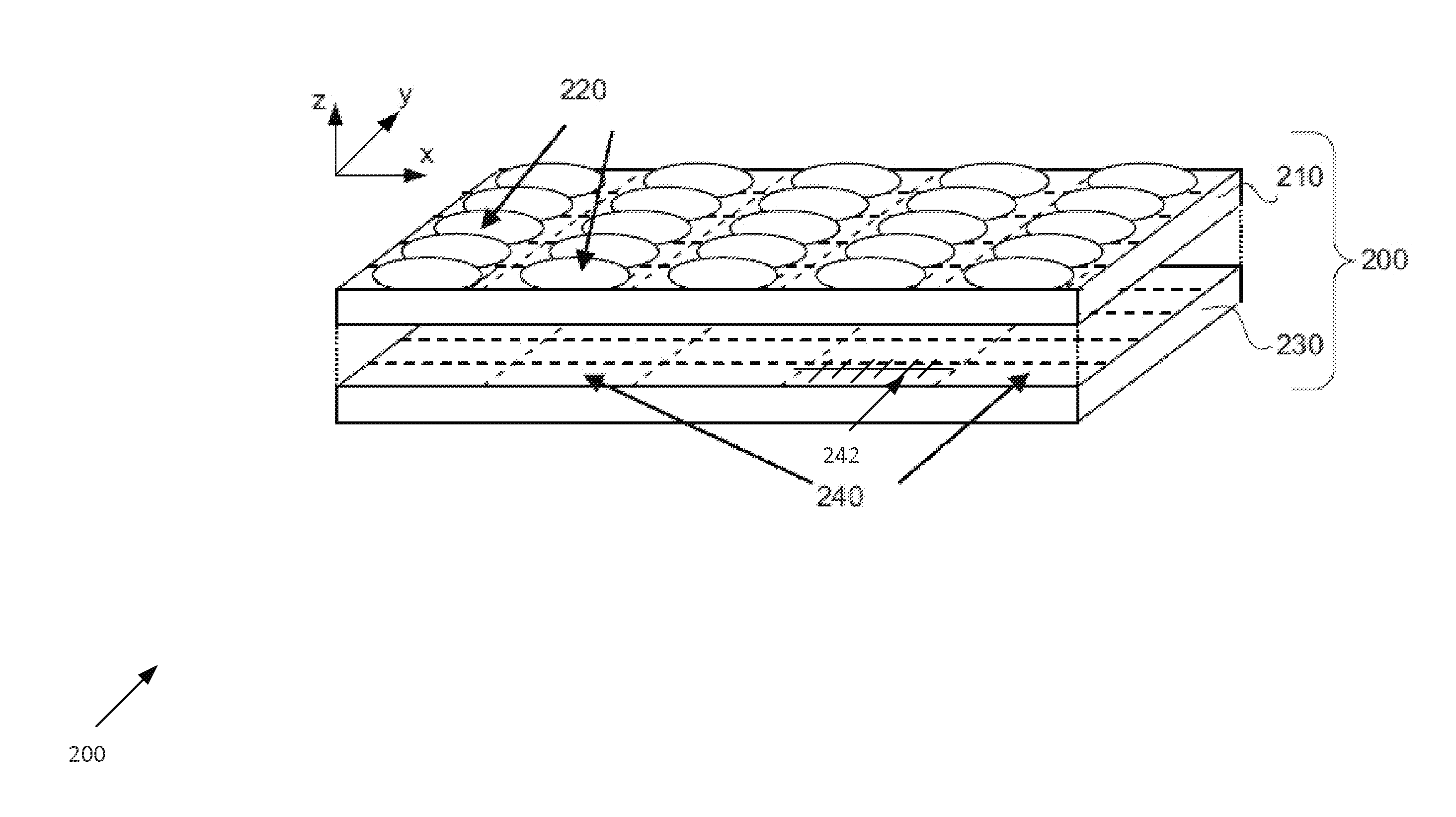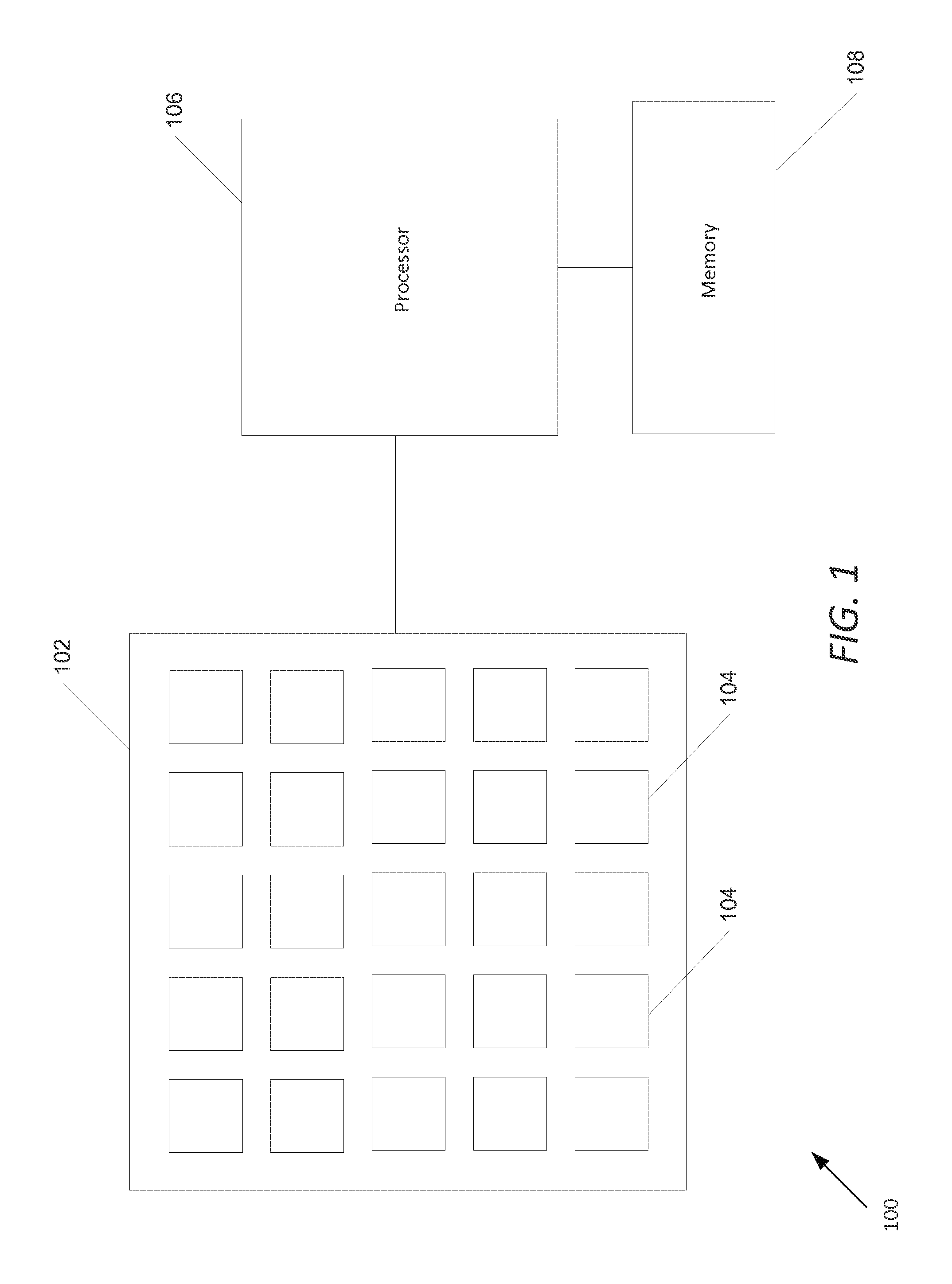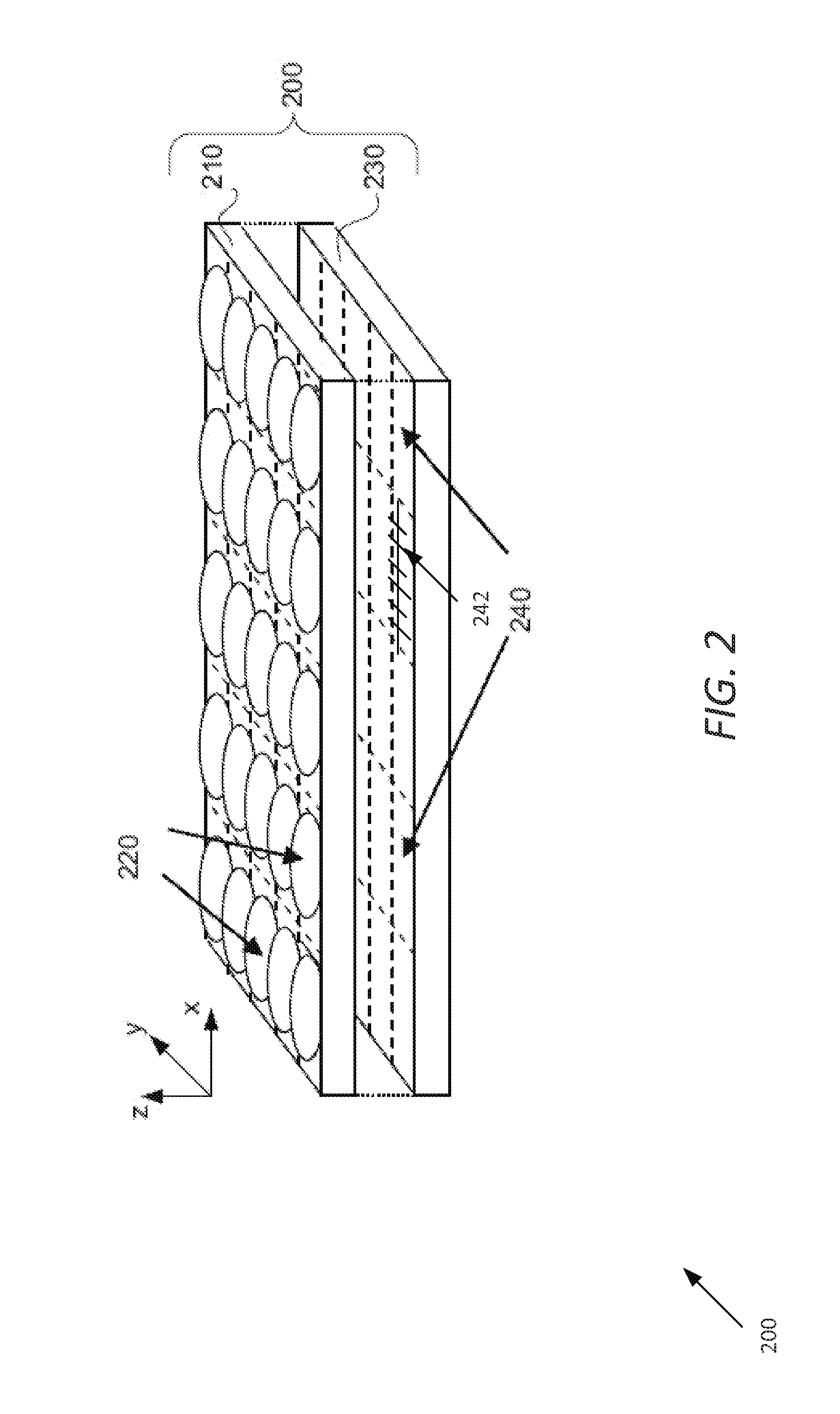Array Camera Architecture Implementing Quantum Dot Color Filters
a color filter and array camera technology, applied in the field of array cameras, can solve the problems of large performance constraints, limitations in the dynamic range, and the camera is subject to various performance constraints
- Summary
- Abstract
- Description
- Claims
- Application Information
AI Technical Summary
Benefits of technology
Problems solved by technology
Method used
Image
Examples
Embodiment Construction
[0030]Turning now to the drawings, systems and methods for implementing quantum dot color filters on array cameras in accordance with embodiments of the invention are illustrated. Many embodiments relate to using quantum dot films color filters in camera modules of array cameras.
[0031]Array cameras including camera modules that can be utilized to capture image data from different viewpoints (i.e. light field images) are disclosed in U.S. patent application Ser. No. 12 / 935,504 entitled “Capturing and Processing of Images using Monolithic Camera Array with Heterogeneous Imagers” to Venkataraman et al. In many instances, fusion and super-resolution processes such as those described in U.S. patent application Ser. No. 12 / 967,807 entitled “Systems and Methods for Synthesizing High Resolution Images Using Super-Resolution Processes” to Lelescu et al., can be utilized to synthesize a higher resolution 2D image or a stereo pair of higher resolution 2D images from the lower resolution images...
PUM
 Login to View More
Login to View More Abstract
Description
Claims
Application Information
 Login to View More
Login to View More - R&D
- Intellectual Property
- Life Sciences
- Materials
- Tech Scout
- Unparalleled Data Quality
- Higher Quality Content
- 60% Fewer Hallucinations
Browse by: Latest US Patents, China's latest patents, Technical Efficacy Thesaurus, Application Domain, Technology Topic, Popular Technical Reports.
© 2025 PatSnap. All rights reserved.Legal|Privacy policy|Modern Slavery Act Transparency Statement|Sitemap|About US| Contact US: help@patsnap.com



